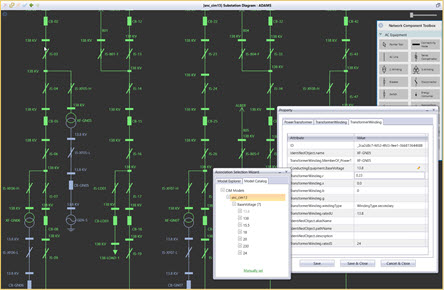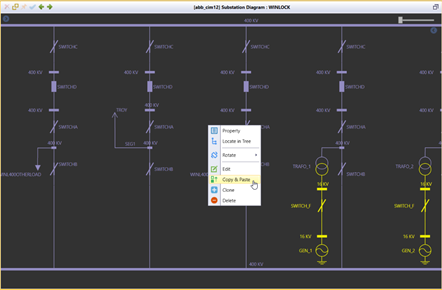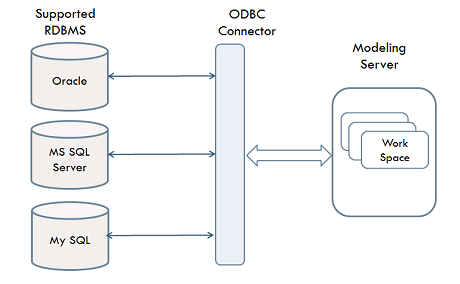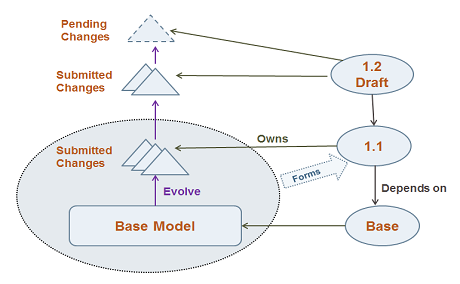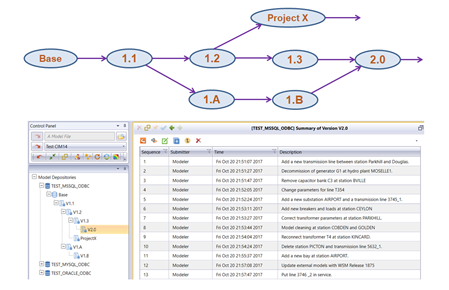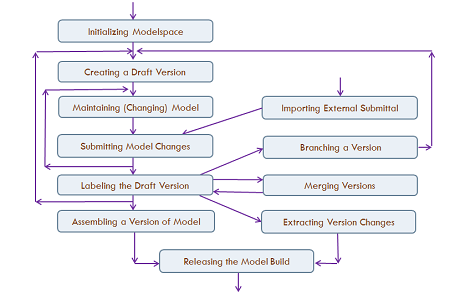- info@powerinfo.us
- (425)-406-7996
M3
A Multidimensional Model Management System
 M3 is a standard based model maintenance & management tool designed to address the emerging information management requirements in the electric power industry. Built upon Common Information Model (CIM) and its related IEC standards, M3 provides a multidimensional modeling space and comprehensive data engineering functions to help electric utility organizations maintain and manage their power system models.
M3 is a standard based model maintenance & management tool designed to address the emerging information management requirements in the electric power industry. Built upon Common Information Model (CIM) and its related IEC standards, M3 provides a multidimensional modeling space and comprehensive data engineering functions to help electric utility organizations maintain and manage their power system models.
One of the key M3 use cases is the support of centralized information management in a utility organization. Under this methodology, a modeling entry should be entered once, and then will be available for all of the downstream systems and applications. Because M3 is based on CIM, the modeling information, full or incremental, can be exported in the standard CIM/XML formats, ready to be consumed by other CIM-compliant information infrastructures.
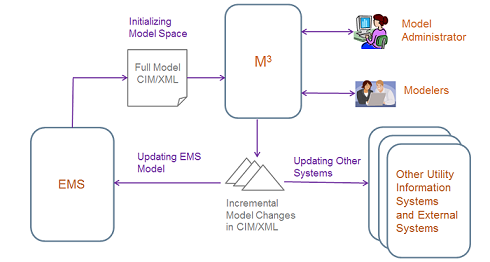
Another use case being targeted by M3 involves synchronizing planning model with operational model. The two types of models have diverged from the beginning, using different naming conventions and modeling practices. There is an imminent need to assemble various what-if study cases by combining information from various systems, including planning tool, EMS, and OMS. M3 is designed to enables users to derive a base case directly from the reality-based operational EMS model and then rapidly construct numerous study cases with various what-if hypotheses, such as scheduled outages and contingency definitions.
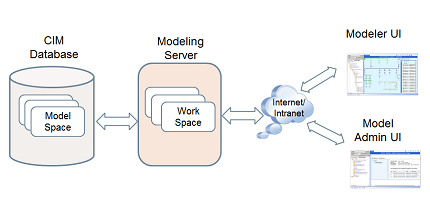 Built as a distributed enterprise application, M3 can be configured to create various modeling environments to fit your business needs. Architecturally, M3 consists of three loosely-coupled tiers: databases consisting of multiple model spaces, modeling servers hosting multiple works paces, and rich-client user interfaces designed for modeling engineers and model administrators respectively. The combination of these creates unlimited independent yet collaborative modeling environments within an organization or between a grid coordinating organization and its members. In the latter case, the ultimate goal is to provide a distributed modeling environment to facilitate model sharing among organizations. Under this configuration, grid coordinating organizations simply define the model boundary sets and then let each member utility (referred to as Model Authority Set in CIM) maintain its portion of the shared regional network model.
Built as a distributed enterprise application, M3 can be configured to create various modeling environments to fit your business needs. Architecturally, M3 consists of three loosely-coupled tiers: databases consisting of multiple model spaces, modeling servers hosting multiple works paces, and rich-client user interfaces designed for modeling engineers and model administrators respectively. The combination of these creates unlimited independent yet collaborative modeling environments within an organization or between a grid coordinating organization and its members. In the latter case, the ultimate goal is to provide a distributed modeling environment to facilitate model sharing among organizations. Under this configuration, grid coordinating organizations simply define the model boundary sets and then let each member utility (referred to as Model Authority Set in CIM) maintain its portion of the shared regional network model.
Download
Key Differentiators
M3 is targeted at filling the gap between the emerging industrial needs and what can be provided by legacy modeling tools in the market.
Standard Compliance: M3 is CIM-based. You can import/export models in CIM/XML, full or incremental. Model contents are stored as CIM-compliant tables, ready for you to build your own CIM-compliant applications.
Supported CIM Versions: As a model-driven solution, M3 supports any versions of CIM, standard or extended. Its database schema is auto-generated from the governing CIM profiles.
High Performance: Storing or retrieving large RTO models of thousands of stations from model space takes seconds rather than minutes/hours.
Comprehensive Model Engineering Functions: Derived from CIMSpy, M3 inherits a rich set of model engineering functions from the base tool, including model browsing, validation, comparison, and visual data mining, etc.
Full Graphics: Graphic support is essential for network modeling. Without it, a modeling tool would be at most a data entry wizard. M3 auto-generates various types of one-line diagrams, enabling users to maintain their power system models in an WYSIWYG style.
Diagram Persistence: Diagrams, auto-generated or imported, are treated as part of the model. They can be stored in the model space and revised later.
Key Features
Graphical Model Editing
With M3, modeling is no longer tedious work. Network topology modeling, for example, is translated into a sequence of graphical activities and data entry is performed in the context of full graphics. While modeling errors are not completely eliminated, they become much more difficult to make with modeling constraints enforced.
Template-based Model Maintenance
M3 enables users to rapidly maintain the network model by using the existing modeling entities as templates. The template-based modeling minimizes data entry and greatly reduces model maintenance effort. With one mouse-clicking, you add a parallel transmission line or duplicate a substation.
Database Support
Oracle, Microsoft SQL Server, or MySQL, it’s your choice. M3 works virtually with any RDBMS with ODBC connection support. Creation of an empty database is all you need from a DBA. M3 automates rest of the database administration, including schema auto-generation and modeling activity tracking, etc.
Time Based
Unlike legacy modeling tools that model only a snapshot of the grid, M3 allows you to model past, present, and future of the grid. It enables models to evolve with major milestones labeled as versions. Model changes between any two dependent versions can be extracted as a CIM difference model, ready to be consumed by other systems.
Multi-Tasking
Model evolution is more than a linear process. Quite often, various revisions of the model are needed to support different business use cases. M3 enables multiple modeling tasks to be performed, concurrently and independently. The branched model revisions or Projects can later be merged into the main trunk or other branches.
Model Build Automation
Model build is no longer an error-prone manual process. M3 is designed to automate the model administration workflow and enforce the data integrity rules during the full life cycle of the model build process, ranging from drafting, validating, submitting, versioning, to model build releasing.

